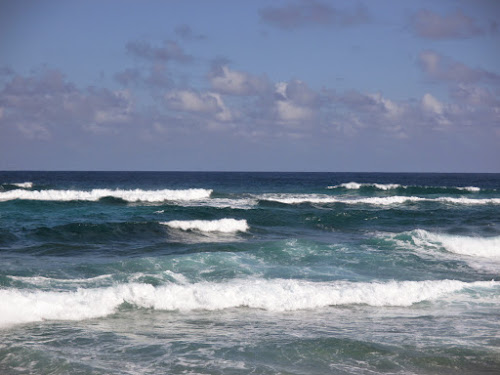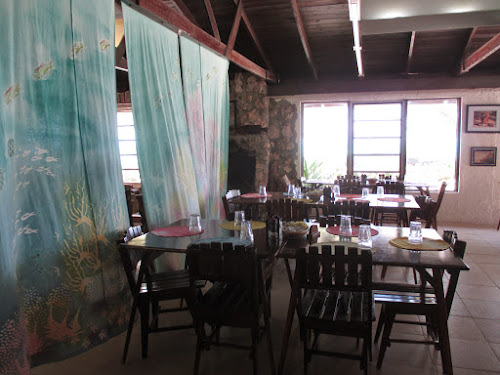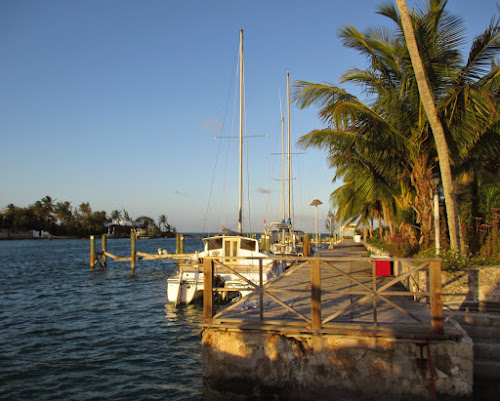Our ferry to Elbow Cay didn't leave until 10:30, so we had a few hours this morning to bird the grounds of the Lofty Fig, where we're staying. Jeannette and I were hanging out by the pool when we heard the call of the elusive (to us) West Indian Woodpecker, a species we hadn't yet managed to see. Joined by Derek and Paul, we headed to the back of the property, past the ubiquitous dog, and eventually caught a glimpse of the bird as it flew into a large ficus. More enjoyable were our looks at a little wave of about a dozen migrant warblers, most very familiar to us in Maine if not usually so spectacularly: at one point I was looking at a Prairie, a male Cape May, a Yellow-throated, and a Worm-eating Warbler all together. We won't see them here for another couple of months at least, and I guarantee I won't be seeing a line-up like that.
Elbow Cay is about four miles off Abaco. A tall, red-and-white-striped lighthouse stands at the head of the harbor of Hope Town, a historic, colonial town that has retained a lot of its original character in its quaint and colorful cottages. Apparently the lighthouse was not appreciated by island residents when it was first built because it deprived them of shipwrecks, their main source of livelihood.
After lunch at a pier restaurant from which we could watch colorful fish, gulls, and even a sea turtle, we walked through town past cute shops and the harbor to bird our way south. Along the way, a West Indian Woodpecker strafed Paul and landed in a tree right overhead, so we finally got our good look at that bird. We walked a few miles to the pretty Abaco Inn, which is sited at a point between a surf beach to the east and protected shallows to the west. To the east, beyond that surf is open ocean to Europe. We enjoyed a cocktail from this vantage point and then got a ride back to town, with time to get an ice cream cone before the ferry.
Under the crashing waves
what wreckage remains--
shells, ships, history.
 |
| Hope Town Lighthouse, Elbow Cay |
 |
| Hope Town |
 |
| Hope Town |
 |
| Wayfinding in Hope Town |
 |
| Surf beach off the Abaco Inn--nothing beyond here but open ocean to Europe |






















